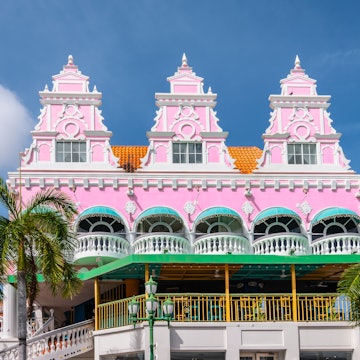
A first-time guide to Antigua and Barbuda


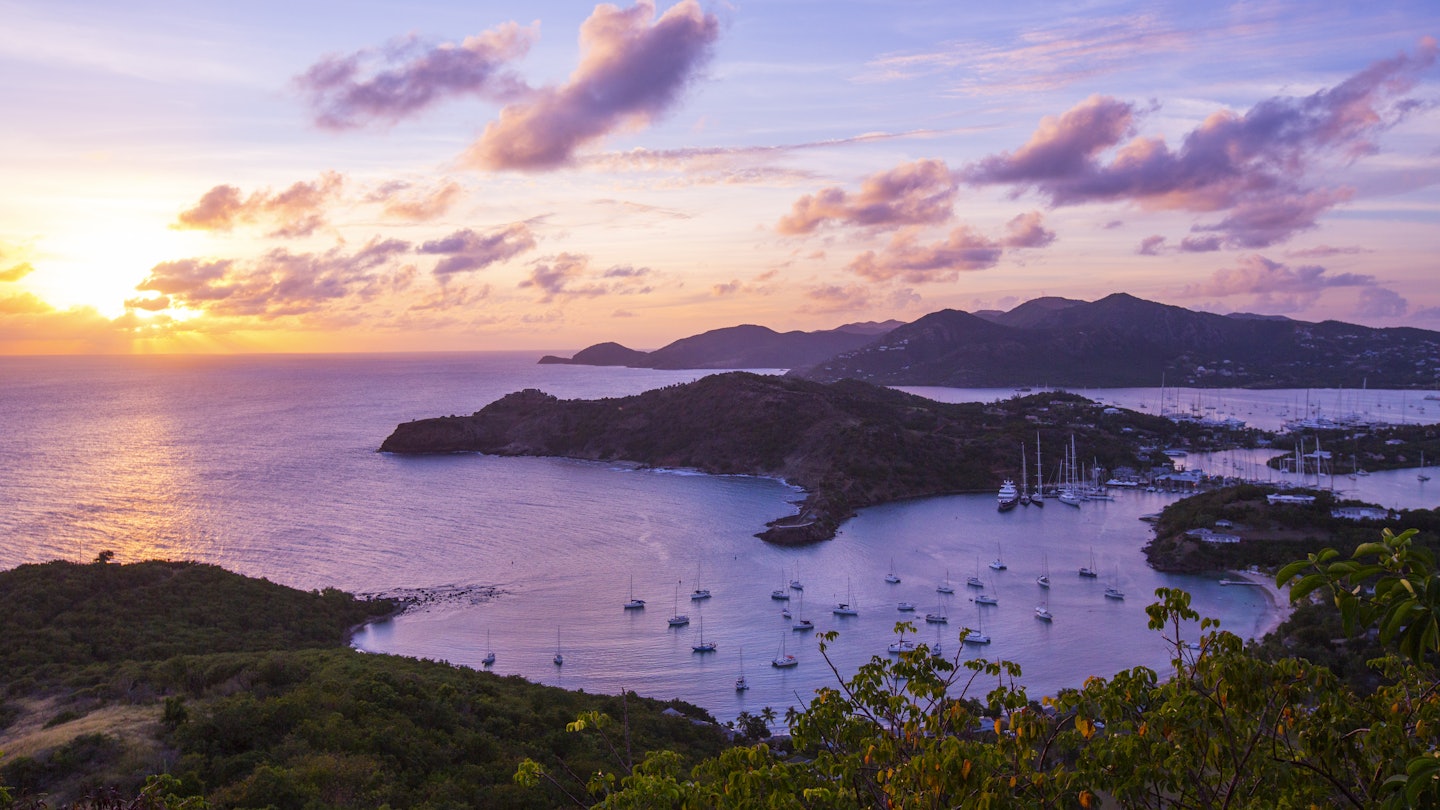
Sunset from Shirley Heights, Antigua. Connect Images/RUSS ROHDE/Getty Images
It sounds like a tall tale. Three hundred sixty-five beaches? No way! But it’s true, the Caribbean twin-island nation of Antigua and Barbuda has a beach for every day of the year.
The luscious sand and crystal-clear, calm waters provide the perfect setting for sipping Antiguan rum, feasting on fresh seafood or indulging on black pineapple.
Plan your time, budget and activities with our first-time guide to this stunning Caribbean destination.
When should I go to Antigua and Barbuda?
It’s the Caribbean, so depending on how hot you like to get, any time of the year is the ideal time to visit. A flurry of activity, people and events occurs during carnival season, which runs from July into early August.
Expect higher prices and lower availability for hotel rooms, rental cars and restaurant reservations. Things die down after carnival, which is a great time to snag a deal.
The hottest months are from June to September (31℃/87℉), while October ushers in cooler temperatures followed by celebrations for Independence Day on November 1.
When is hurricane season in Antigua and Barbuda?
Hurricane season runs from mid-August to mid-October, although storms can occur between June and November (rainy season).
Pay careful attention to the forecast when planning travel during these periods and purchase travel insurance that includes cancellations for weather-related issues.
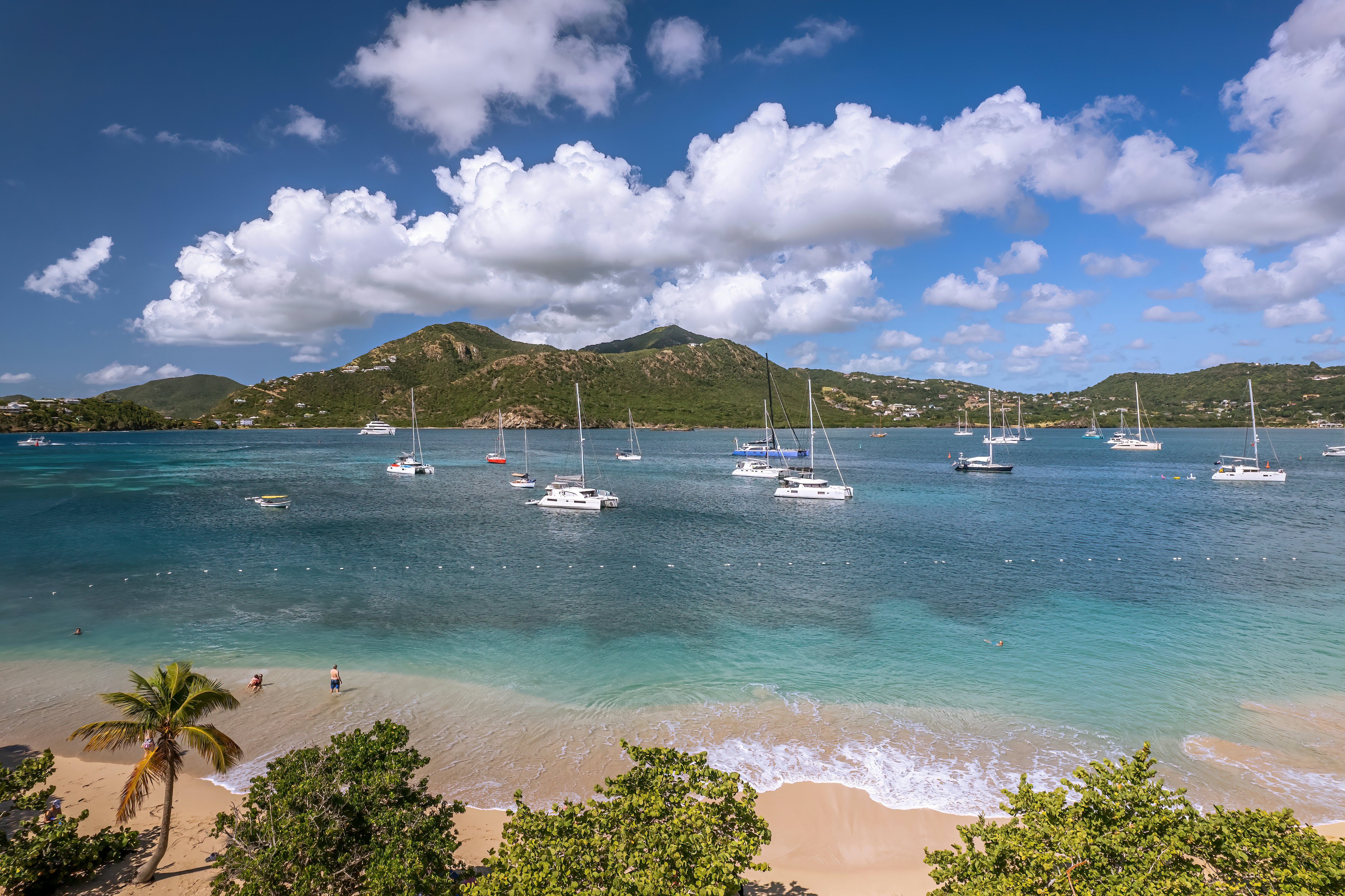
How much time should I spend in Antigua and Barbuda?
Two weeks will allow you to fully indulge in everything the island nation offers. Activities range from exploring the picturesque beaches like Ffryes Beach, Pigeon Point Beach and Fort James Beach, to dining at the superb Saltplage Restaurant at the Siboney Bay Beach Club near Dickenson Bay. (Be sure to order the crab cakes topped with pico de gallo and fresh passion fruit beurre blanc).
You’ll find plentiful options for adventure, too, from booking a kayaking tour to exploring the mangroves with South Coast Horizons.
Take a boat tour to secluded coves and coastal features, or even circumnavigate all of Antigua. For those looking for something with a bit more pace, the Antigua Rain Forest Canopy Tour has 13 zip lines and six tours for all ages.
Is it easy to get in and around Antigua and Barbuda?
Despite being the largest of Leeward Islands on which English is spoken, the islands are relatively small, with a total area of 443 sq km (171 sq miles), of which Antigua covers 280 sq km (108 sq miles). This makes getting around quite easy.
Rent a car in Antigua for maximum ease. At around EC$120 (US$45) per day, a two-week rental will add up, but will offer true convenience (there are a lot of beaches here to explore, remember?).
Peak traffic hours are from 8am to 4pm. It’s best to avoid the main streets and favor outer roadways that will take you away from the town’s congestion.
Hiring taxis offers the advantage of a driver with extensive knowledge of the islands. Taxis charge based on the distance and the number of passengers. A short ride might cost around EC$30 (US$11), while a longer trip to a more distant location could run to EC$75 (US$28).
Since there’s no formal schedule for public transportation, its availability depends entirely on the bus operators’ discretion. Despite its affordability, I wouldn’t recommend it as your sole mode of transportation.
Just 42km (26 miles) north of Antigua, Barbuda can be reached either by a quick 15-minute flight or a 90-minute ferry ride from St John’s.
Due to its small size and centralized nature, there is no public transportation in Barbuda, but taxis and car rentals are readily available, especially on the outskirts of Codrington, Barbuda's sole village.
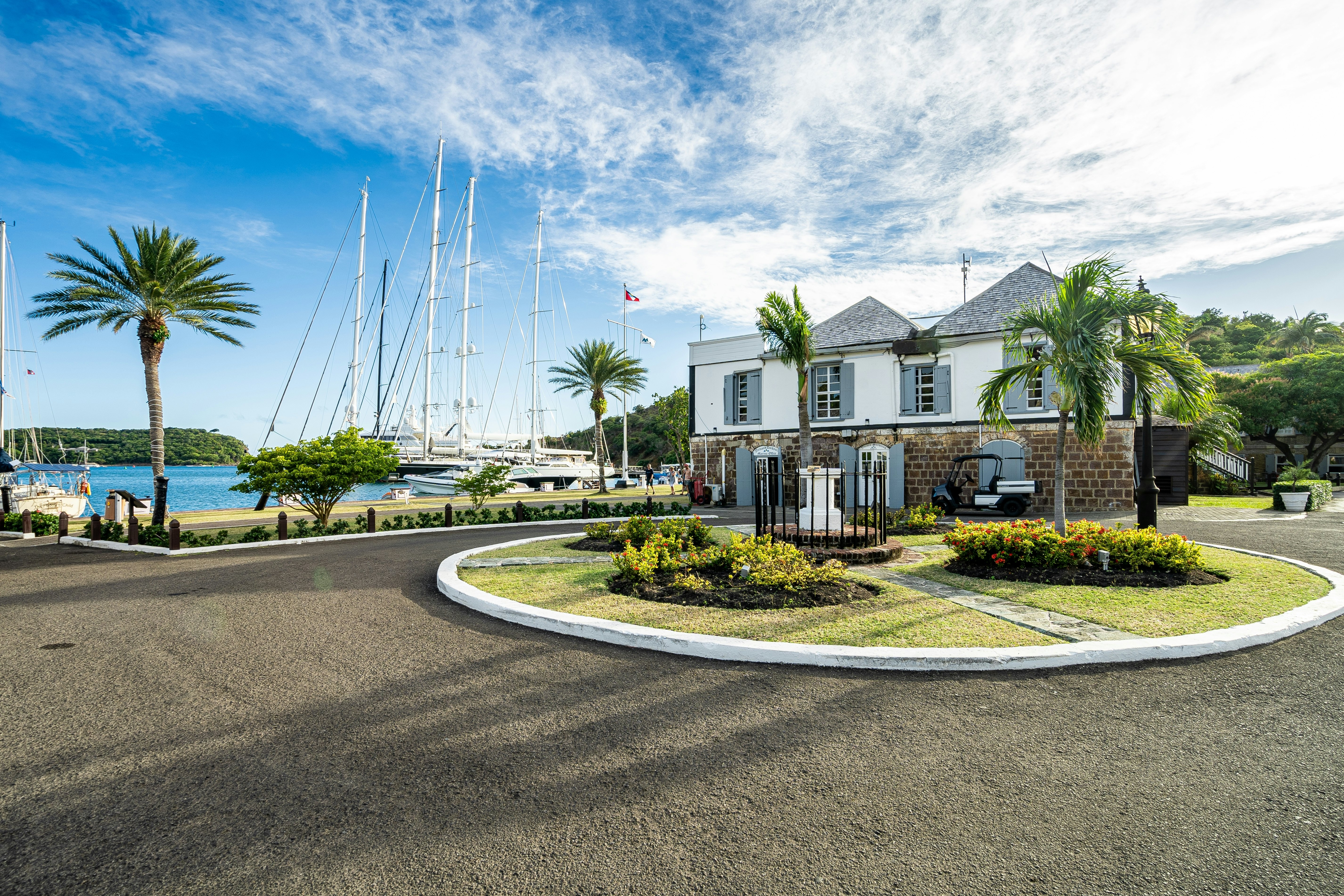
Top things to do in Antigua and Barbuda
Visit Nelson’s Dockyard
A historic site that has been continuously used as a marina since the 18th century, Nelson's Dockyard combines culture, history and a range of appealing amenities.
Once a former British naval base, this remarkably well-preserved Georgian dockyard takes its name from Admiral Horatio Lord Nelson, who, long before his triumph at Trafalgar, was tasked with enforcing British law in Antigua between 1784 and 1787.
Historical objects on display include Nelson's telescope, tea caddy, and cannons now repurposed as bollards for securing ships. The Tartar Bell – which once graced a ship called HMS Tartar – today hangs over the main gate.
Eat fresh seafood
Fridays are for seafood; very few places do it better than Copper and Lumber Store Hotel. Located at Nelson's Dockyard, the Mainbrace Restaurant & Pub, serves up heaps of fresh fish options like shrimp, succulent mussels and lobster, all prepared with a combination of spices and saffron-infused rice.
Dig into the national dish of pepperpot and fungee
At any Antiguan eatery, pepperpot and fungee take the spotlight. The former is a rich stew made with fresh greens such as spinach and okra, and enriched with dumplings and meats like pigtails, salted beef and (occasionally) chicken.
Fungee are soft cornmeal dumplings typically eaten with pepperpot, though they can also be served with other dishes, especially fish. For a taste of the real stuff, swing by Joe Mikes Restaurant in the heart of St Johns.
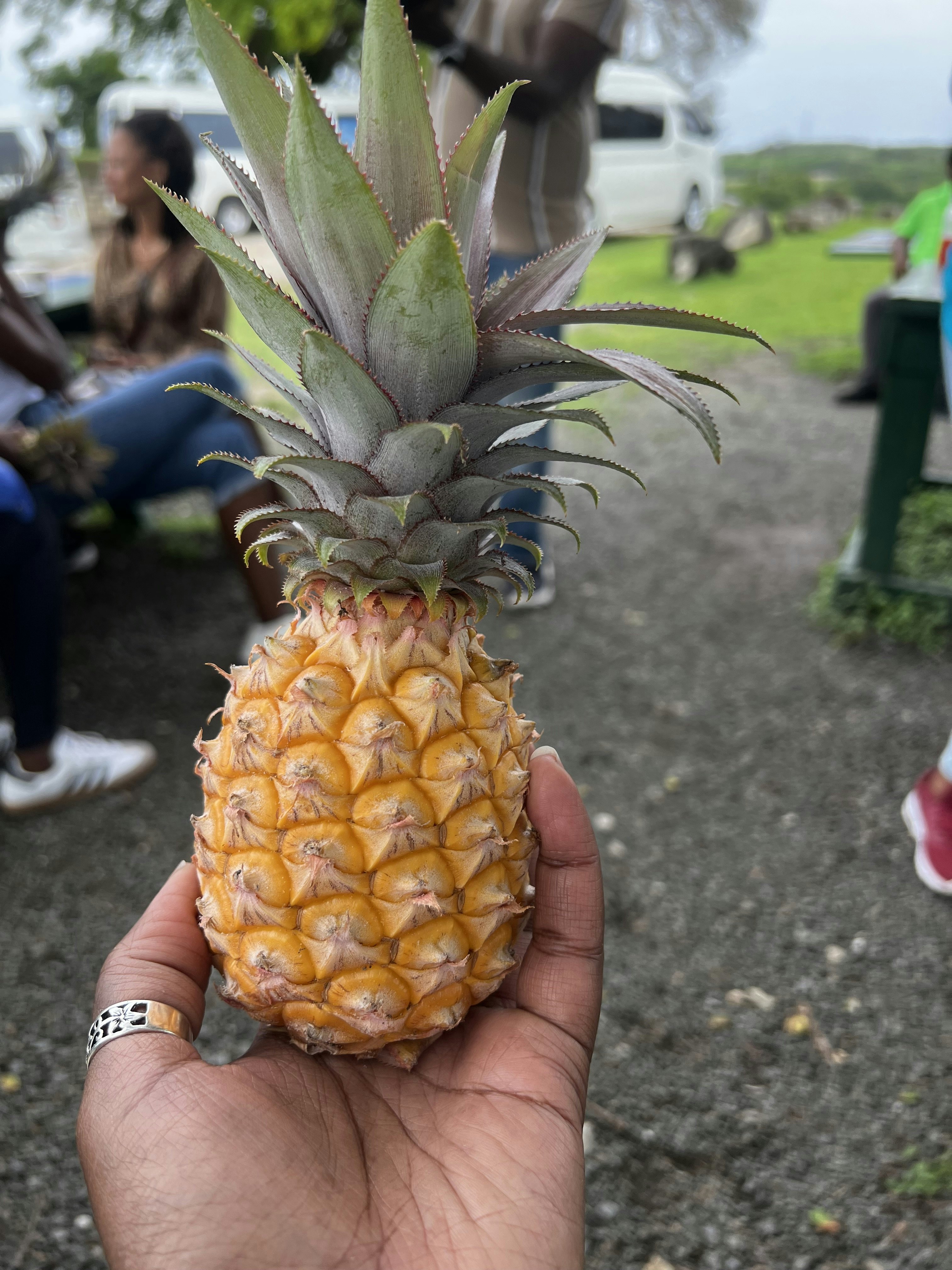
Taste Antiguan black pineapple
The black pineapple is on Antigua and Barbuda’s coat of arms, so this fruit is a big deal to the nation.
By the time you sink your teeth into the fleshy, sugary goodness, the black outer shell has long faded into the traditional green/yellow combo. Despite its name, the fruit is only black during the earlier stages of growth, long before it's ripe enough to harvest.
The taste lacks the harsh acidity that often accompanies other types of pineapples. The Antiguan black pineapple is quite sweet, though not toothache-inducing, and it's so soft. In fact, the fruit is so delicate that exporting it without damaging the tasty treat is nearly impossible.
That means, there’s only one way to taste a black pineapple – go to Antigua! You’ll find the fruit sold at roadside stalls and markets around the country.
Pay your respects at Devil’s Bridge
At first glance, Devil’s Bridge looks like a peaceful lookout on the eastern side of the island. The natural bridge overlooks the Atlantic Ocean where the waters are a bit rougher with strong winds and large waves.
This natural feature provided an escape for runaway enslaved people who decided life in chains was no life at all. Devil’s Bridge faces east towards West Africa, where those who took their lives believed their souls would return.
Join a tuk-tuk tour
There's nothing like speeding through the streets of the island in a motorized tuk-tuk, with the air whizzing by as you cruise alongside much larger vehicles.
Island Routes’ Tuk Tuk Adventures Rainforest and Beach Hopping tour takes visitors on a 4.5-hour excursion to historic locations, such as old sugar factories and cricket stadiums.
The trip includes refreshments, a light lunch and pit stops at local vendors like Rainforest Culture Shop – locally known as Elaine’s shop (bring cash) – and of course, to beaches including Morris Bay, Darkwood Beach and Little Ffryes Beach.

Observe the wildlife at Frigate Bird Sanctuary
A trip to Barbuda is incomplete without a trip to Codrington Lagoon to see the thriving frigate-bird population – the largest in the western hemisphere. Sharing the sanctuary with the majestic kite-like birds are some 170 migrating species.
You'll tour the area on a small ferry (12 passengers maximum). It's important to respect the birds' natural habitat by refraining from touching or feeding them. Drones are not allowed in the protected area.
Place a bet on a horse race in Barbuda
Experience the excitement of bi-weekly horse racing at Coronation Park on River Rd. The ambience is electric, with a vibrant crowd cheering and wagering on the horses. Food vendors offer a wide range of local delicacies and lively music and entertainment for children.
Sample traditional Barbudan cuisine
A traditional Barbudan breakfast includes stewed conch or lobster when in season, saltfish, red herring, corned beef and stewed sausage.
For a side dish, try chop-up (eggplant, spinach and okra mixed with papaya). Mashed pumpkin or squash is usually served with boiled egg, fried plantain and bread; fried dumplings; or fritters, either banana- or pumpkin-flavored.
On Saturday mornings in Codrington from 6am until the last fish is sold, three hot-spot street vendors sell roasted yabba dumplings, fritters and an assortment of pan-fried fish.
Don’t miss the chance to try the Caribbean cuisine at Uncle Roddy’s in Codrington. Other noteworthy options are the Sage Table and Wa’omoni.
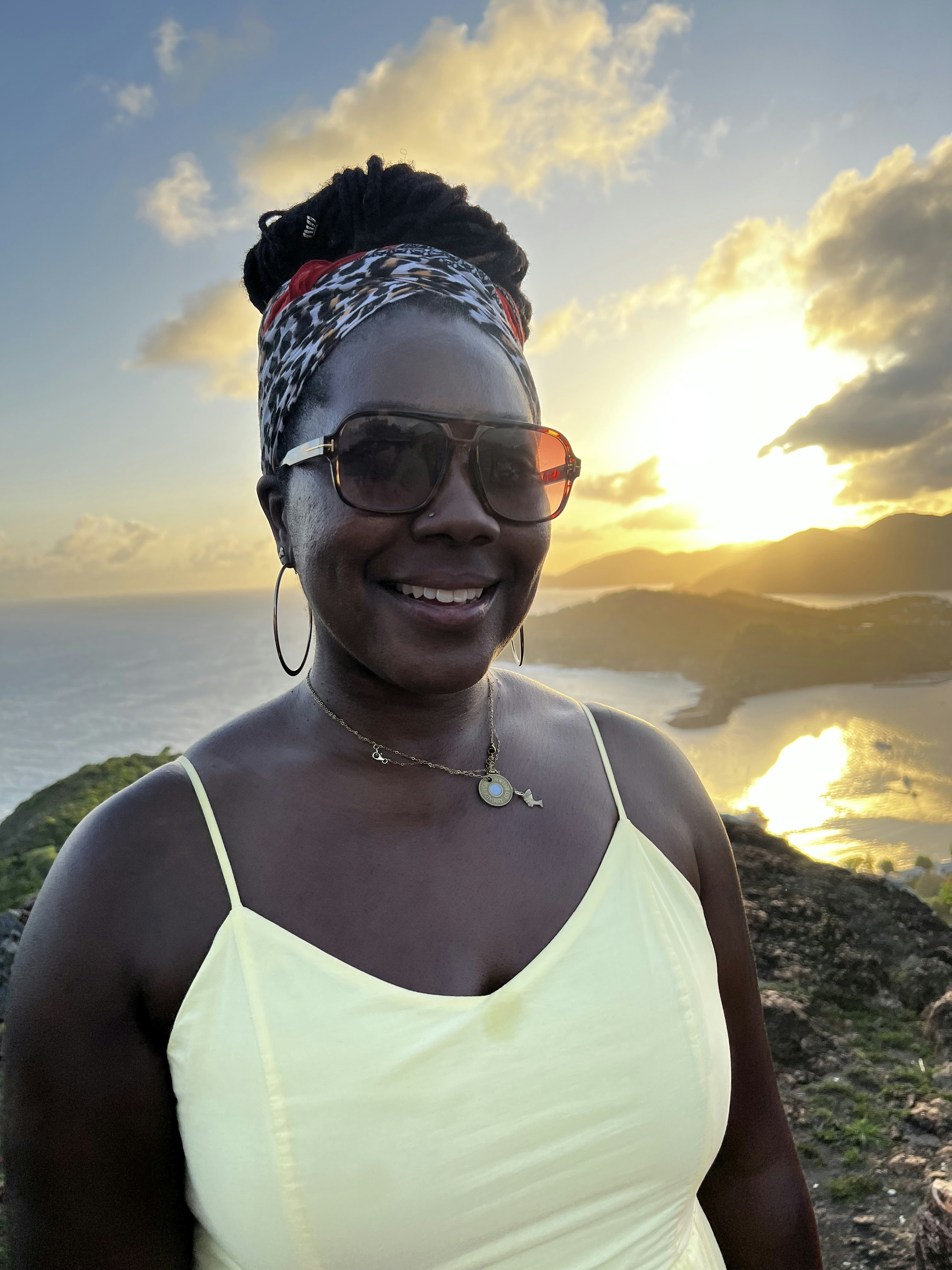
My favorite thing to do in Antigua and Barbuda
Maybe it was the live steel pan music playing in the background; the belly full of barbecue chicken and potato salad; the rum punch; my cute yellow dress but, Sunday at Shirley Heights Lookout was magical.
Languid movements and light conversations with local vendors selling trinkets while gazing over the stunning English and Falmouth Harbours are just the opening act. Everyone is biding their time for the sun to set, which is the real reason we’re all here at this restored military outpost.
The Golden Hour makes a bad photo impossible and excitement builds as the sun sinks behind Mt Obama (formerly Boggy Peak). The party doesn’t stop until 10pm with more musical acts and a general mellow vibe to rid those Sunday scaries.
Local tip: Make sure to carry cash (EC or US) as many local vendors are cash only.
How much money do I need for Antigua and Barbuda?
Depending on your choices for accommodations and activities, Antigua can be an expensive destination.
All-inclusive resorts run toward the higher end; opting for a smaller boutique hotel offers the flexibility to explore the island and manage your expenses more effectively. Carry cash with you.
Guest room: starting at EC$400 (US$150) per night
Basic hotel room: EC$600–1000 (US$222–370) per night, depending on the season
Self-catering apartment (including Airbnb): EC$300 (US$111)
Bowl of pepperpot: EC$30 (US$11)
BBQ and fries: EC$17 (US$6.30)
Coffee: EC$10–20 (US$3.70–7.50)
Three-course dinner for two in Barbuda: EC$270 (US$100)
Beer at the bar: EC$6–15 (US$2–5.50)
Note that costs are slightly higher in Barbuda, since everything must be imported from Antigua.
Alicia Johnson travelled to Antigua and Barbuda with support from the Caribbean Hotel & Tourism Association (CHTA). Lonely Planet contributors do not accept freebies in exchange for positive coverage.





